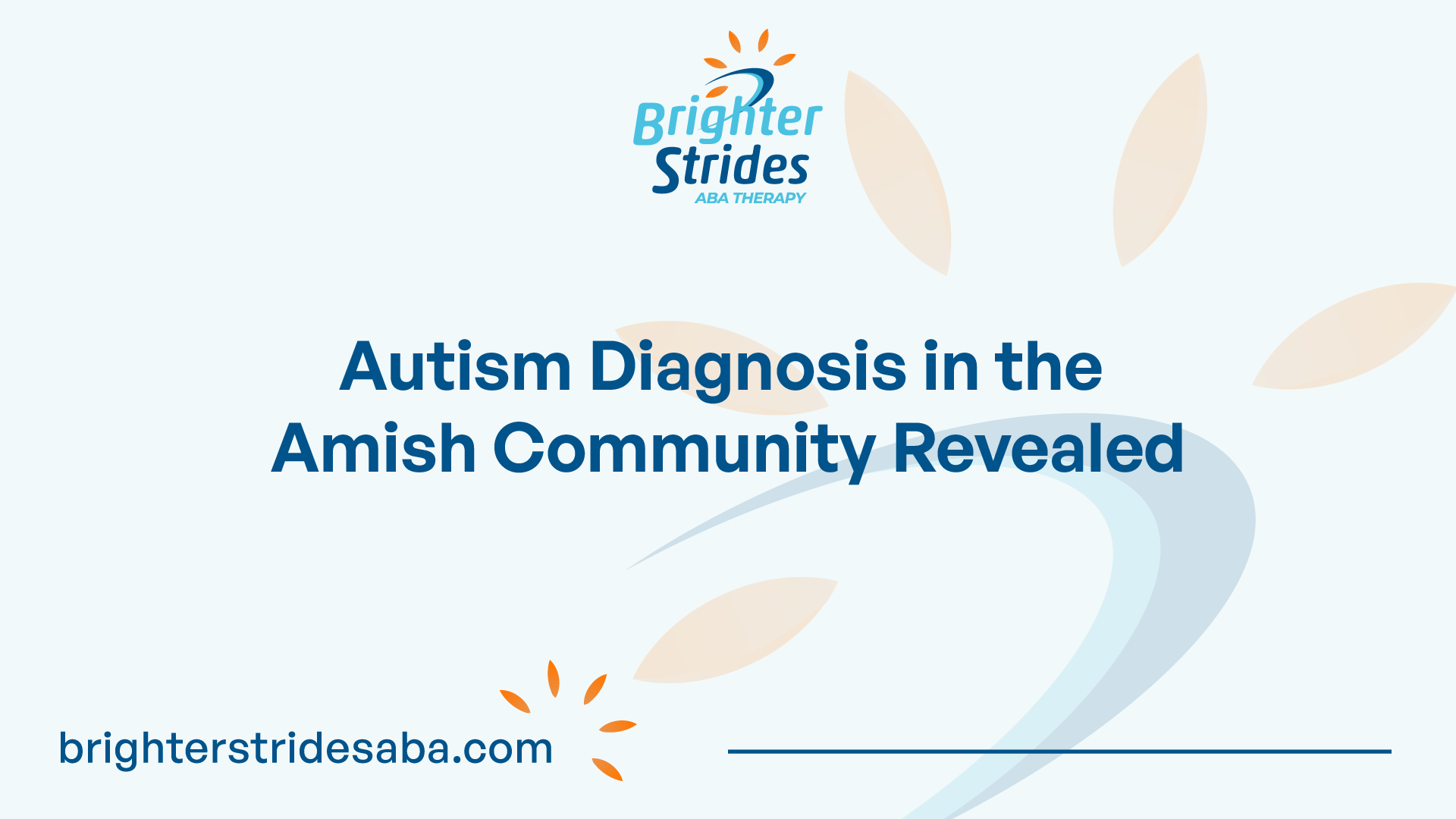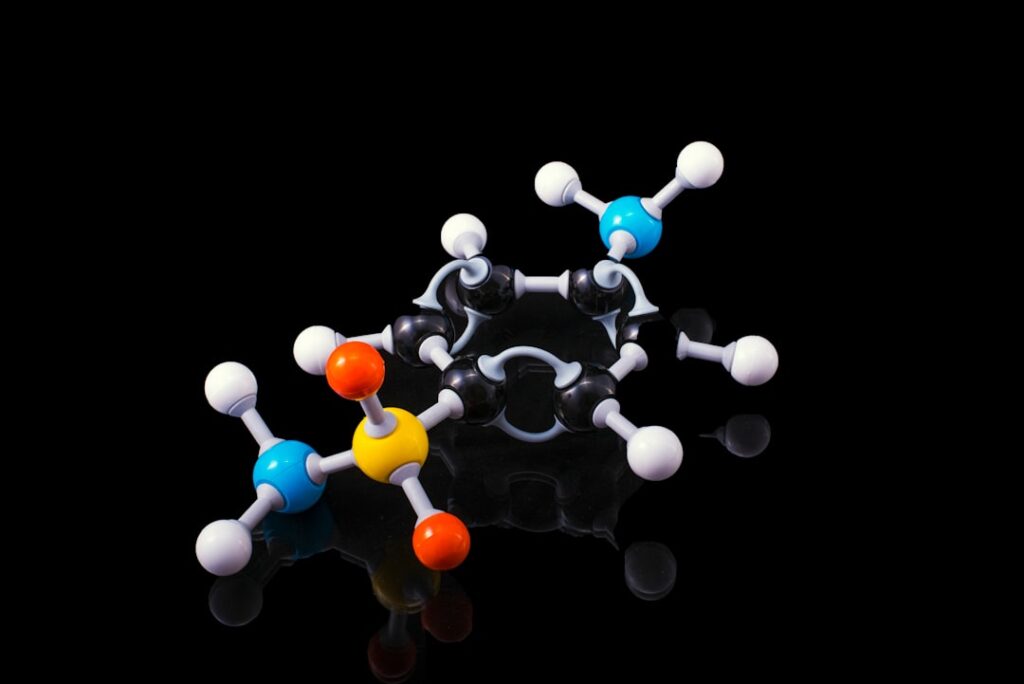Autism in the Amish Community
Autism, a developmental disorder that affects social interaction, communication, and behavior, is not limited to any specific community or culture. The prevalence of autism in the Amish community has been a topic of interest and misconception. In this section, we will explore the prevalence of autism in Amish children and debunk some of the myths surrounding it.

Prevalence of Autism in Amish Children
Scientific studies have debunked the myth of low autism rates in the Amish community. Research conducted in Pennsylvania and Ohio found that the prevalence of autism in the Amish population was comparable to that in other populations [1]. From September 2008 to October 2009, a study conducted in two Amish communities in Holmes County, Ohio, and Elkhart-Lagrange County, Indiana, screened 1899 Amish children. Out of these children, 25 exhibited positive results for Autism Spectrum Disorder (ASD) on either the Social Communication Questionnaire (SCQ) or the DSM-IV-TR checklist. Among them, 7 children were confirmed to have a diagnosis of ASD using the Autism Diagnostic Observational Schedule (ADOS), Autism Diagnostic Interview (ADI), and clinical judgment.
Myths and Realities
The limited exposure of the Amish community to mainstream society has led to the misconception of low autism rates among them due to a perceived lack of modern environmental factors or influences. However, research has shown that this belief is not supported by scientific evidence. Cultural and religious beliefs within the Amish community may hinder the early recognition and diagnosis of autism. Some behaviors associated with autism may be attributed to variations in personality or character instead of being considered a developmental disorder [1].
Access to healthcare and diagnostic services can be limited within the Amish community. The community tends to rely on traditional healing methods and has limited interaction with the outside world. This can result in delayed or missed opportunities for autism diagnosis.
Understanding the prevalence and challenges surrounding autism diagnosis in the Amish community is essential for developing culturally sensitive approaches to diagnosis and support. By dispelling myths and promoting awareness, we can work towards ensuring that individuals within the Amish community receive the necessary resources and support for autism diagnosis and intervention.
Factors Influencing Autism Diagnosis
When it comes to diagnosing autism in the Amish community, several factors can influence the recognition and understanding of the disorder. These factors include cultural and religious beliefs as well as access to healthcare services.
Cultural and Religious Beliefs
Cultural and religious beliefs within the Amish community can impact the early recognition and diagnosis of autism. Some behaviors associated with autism may be attributed to variations in personality or character instead of being considered a developmental disorder. This lack of awareness or understanding can delay diagnosis and intervention. The Amish community values conformity and traditional practices, which can create challenges in accepting and understanding the unique needs of individuals with autism.
Access to Healthcare Services
Access to healthcare and diagnostic services can be limited within the Amish community. The Amish tend to rely on traditional healing methods and have limited interaction with the outside world. This can result in delayed or missed opportunities for autism diagnosis. The preference for alternative healthcare practices and home remedies may not provide the necessary resources and support for individuals with autism. Additionally, the remote nature of some Amish communities can pose challenges in accessing healthcare facilities and professionals who specialize in autism diagnosis and treatment.
Understanding the influence of cultural and religious beliefs, as well as the limited access to healthcare services, is crucial in addressing the unique challenges faced within the Amish community when it comes to autism diagnosis. It is important to develop culturally sensitive approaches that consider the specific needs and beliefs of the community. By promoting awareness, providing education, and facilitating access to appropriate healthcare services, we can strive towards better recognition and support for individuals with autism within the Amish community.
Challenges in Recognizing Autism
Within the Amish community, there are unique challenges in recognizing and diagnosing autism. These challenges arise due to a combination of cultural and religious beliefs, limited access to healthcare services, and misconceptions surrounding autism.
Delayed Recognition
Cultural and religious beliefs within the Amish community may hinder the early recognition and diagnosis of autism. Some behaviors associated with autism may be attributed to variations in personality or character instead of being considered a developmental disorder. The emphasis on conformity and traditional practices within the community can lead to a delay in recognizing the unique characteristics and needs of individuals with autism.
Misconceptions and Misdiagnosis
In addition to delayed recognition, misconceptions about autism can contribute to misdiagnosis or underdiagnosis. Cultural and religious beliefs within the Amish community may affect the identification and understanding of autism. Certain behaviors associated with autism may not be readily recognized as a developmental disorder, but rather seen as variations in personality or character. This lack of awareness or understanding can delay the appropriate diagnosis and intervention.
Moreover, the reliance on alternative healthcare practices and home remedies within the Amish community may not provide the necessary resources and support for individuals with autism. Limited access to healthcare facilities and professionals who specialize in autism diagnosis and treatment further compounds the challenge of accurate recognition and diagnosis.
Recognizing the unique needs of individuals with autism within the Amish community requires a greater understanding and awareness of the disorder. Education and outreach programs can help bridge the gap between cultural and religious beliefs and the importance of early diagnosis and intervention. By promoting autism awareness and providing access to appropriate healthcare services, the Amish community can better support individuals with autism and their families.
Scientific Studies and Findings
In order to dispel myths and misconceptions surrounding autism diagnosis in the Amish community, numerous scientific studies have been conducted. These studies provide valuable insights into the prevalence of autism and its comparison to the general population.
Debunking Myths
Scientific studies have consistently debunked the notion of low autism rates in the Amish community. Research conducted in Pennsylvania and Ohio found that the prevalence of autism in the Amish population was comparable to that in other populations. One study published in 2008 by the Journal of Autism and Developmental Disorders examined the prevalence of autism in the Amish community of Pennsylvania. The study concluded that the prevalence of Autism Spectrum Disorder (ASD) in the Amish population was comparable to the prevalence reported in other populations, dispelling the myth of significantly lower rates.
Another study published in 2011 by the Journal of Child Neurology investigated the prevalence of autism in the Amish and non-Amish populations in Ohio. The study found no significant difference in autism rates between the two groups, further refuting the notion of lower rates within the Amish community.
Comparison to General Population
Scientific studies comparing autism rates in the Amish community to the general population have yielded important findings. These studies have consistently demonstrated that autism occurs at similar rates among the Amish population as it does in the general population [1]. The prevalence of autism in the Amish community has been found to be comparable to that of other populations, debunking the myth of significantly lower rates.
For instance, from September 2008 to October 2009, a study screened 1899 Amish children in Holmes County, Ohio, and Elkhart-Lagrange County, Indiana. Out of the children screened, 25 exhibited positive results for Autism Spectrum Disorder (ASD) on various diagnostic measures. Specifically, 7 children were confirmed to have a diagnosis of ASD using the Autism Diagnostic Observational Schedule (ADOS), Autism Diagnostic Interview (ADI), and clinical judgment.
These scientific studies emphasize that autism affects the Amish community at similar rates as it does in the general population. It is crucial to dispel myths and misconceptions to ensure accurate understanding and support for individuals with autism within the Amish community.
Cultural Sensitivity in Diagnosis
When it comes to diagnosing autism within the Amish community, cultural sensitivity is of utmost importance. Understanding the unique genetic, environmental, and cultural factors at play is crucial for developing effective and supportive approaches to diagnosis and treatment.
Genetic and Environmental Factors
Genetic and environmental factors contribute to the diagnosis of autism within the Amish community. The Amish have a relatively closed gene pool, which may result in a higher prevalence of certain genetic variations associated with autism. Additionally, environmental factors such as exposure to toxins or infections during pregnancy can also influence the development of autism in children [1].
It is essential for healthcare professionals to be aware of these genetic and environmental factors when working with the Amish community. This knowledge can help guide the diagnostic process and inform personalized treatment plans that take into account the unique circumstances of each individual.
Developing Supportive Approaches
In order to provide effective support to individuals with autism in the Amish community, it is crucial to develop culturally sensitive approaches. This involves understanding and respecting the cultural and religious beliefs that may impact the perception of autism within the community.
Cultural and religious beliefs within the Amish community may hinder the early recognition and diagnosis of autism. Some behaviors associated with autism may be attributed to variations in personality or character instead of being considered a developmental disorder [1]. By working closely with community leaders, healthcare professionals can help foster a better understanding of autism and promote awareness within the community.
Furthermore, limited access to healthcare and diagnostic services can be a challenge within the Amish community. Traditional healing methods and limited interaction with the outside world may result in delayed or missed opportunities for autism diagnosis. It is important to bridge this gap by providing resources and support within the community itself, including specialized services and professionals who can help with the diagnosis and treatment of autism.
By being culturally sensitive and taking into account the genetic, environmental, and cultural factors that influence the diagnosis of autism within the Amish community, healthcare professionals can play a vital role in ensuring that individuals with autism receive the support and resources they need. This collaborative approach helps to promote understanding, acceptance, and inclusivity for individuals with autism in the Amish community.
Promoting Autism Awareness
In order to create a more inclusive society, it is crucial to promote autism awareness and understanding. By dispelling stereotypes and misconceptions surrounding autism, we can foster an environment that embraces and supports individuals with autism. This section will explore two important aspects of promoting autism awareness: creating an inclusive society and advocating for support and research.
Inclusive Society
Raising awareness about autism plays a vital role in creating an inclusive society. It involves educating the general public about the characteristics of autism, the challenges individuals with autism may face, and the importance of providing appropriate support and accommodations. By increasing understanding and acceptance, we can help break down barriers and reduce stigma.
Creating an inclusive society means ensuring that individuals with autism have equal access to education, employment opportunities, and community participation. It involves implementing inclusive policies and practices in schools, workplaces, and public spaces. By embracing diversity and accommodating the unique needs of individuals with autism, we can create an environment that promotes their well-being and enables them to reach their full potential.
Advocacy for Support and Research
Advocacy plays a crucial role in ensuring that individuals with autism receive the support and resources they need. This includes advocating for improved access to healthcare and diagnostic services, especially within communities that face unique challenges, such as the Amish community.
The Amish community, with its cultural and religious beliefs, may face barriers in recognizing and addressing autism spectrum disorder (ASD). By advocating for improved access to healthcare services, diagnostic facilities, and specialized professionals, we can help overcome these barriers and ensure that individuals within the Amish community receive timely and appropriate interventions.
Advocacy also extends to supporting autism research. By advocating for increased funding and resources, we can contribute to a better understanding of autism and the development of more effective interventions and treatments. This research is crucial in improving the lives of individuals with autism and their families.
Through advocacy efforts, we can work towards a society that provides the necessary support, resources, and opportunities for individuals with autism. By raising awareness, promoting inclusivity, and advocating for support and research, we can create a more compassionate and supportive world for individuals with autism.

 We've just released an article!
Check out our blog!
We've just released an article!
Check out our blog!



